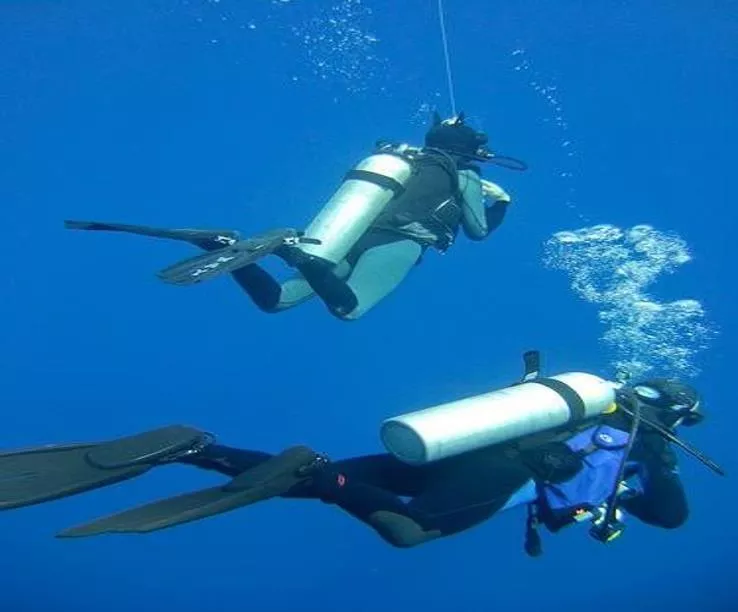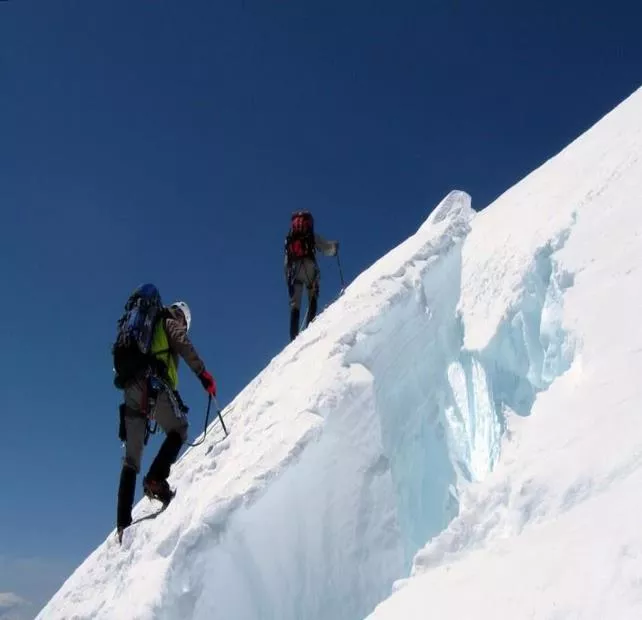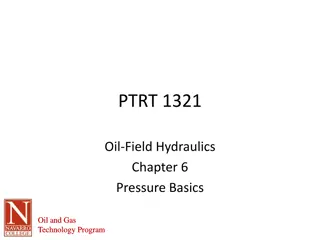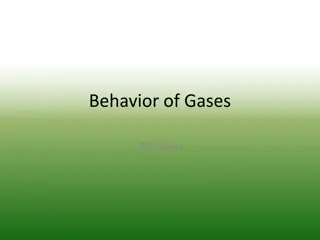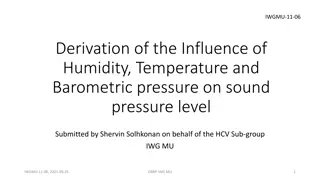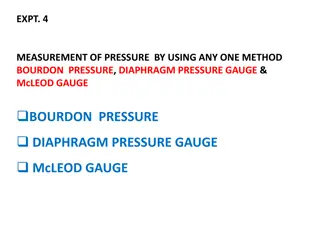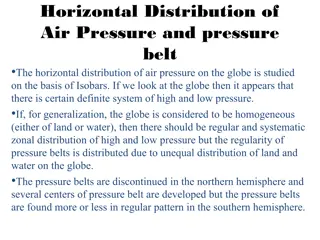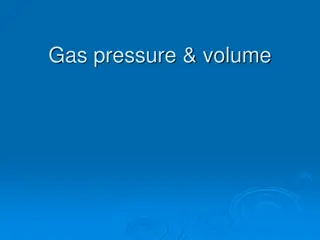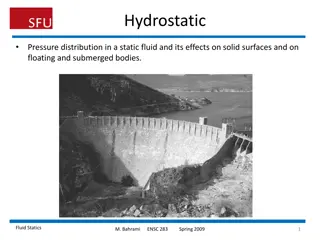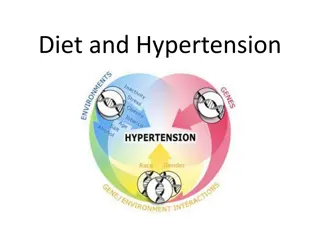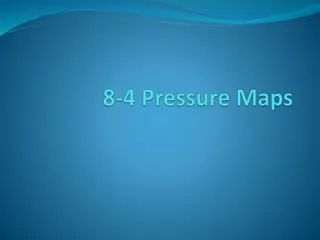Effects of Low and High Gas Pressure on the Body
Explore the impact of low and high gas pressure on the human body, from the effects of exposure to barometric pressures to body acclimatization under varying conditions. Understand decompression sickness, nitrogen narcosis, and the challenges faced in deep-sea diving due to increased barometric pressure. Delve into the physiological alterations, risks, and adaptations associated with different gas pressures.
Uploaded on Oct 09, 2024 | 0 Views
Download Presentation

Please find below an Image/Link to download the presentation.
The content on the website is provided AS IS for your information and personal use only. It may not be sold, licensed, or shared on other websites without obtaining consent from the author.If you encounter any issues during the download, it is possible that the publisher has removed the file from their server.
You are allowed to download the files provided on this website for personal or commercial use, subject to the condition that they are used lawfully. All files are the property of their respective owners.
The content on the website is provided AS IS for your information and personal use only. It may not be sold, licensed, or shared on other websites without obtaining consent from the author.
E N D
Presentation Transcript
Effects of low and high gas pressure on the body Dr.Aida Korish Assoc.Prof.Physiology KSU iaidakorish@yahoo.com
Objectives By the end of this lecture you should be able to: 1Describe the effects of exposure to low and high barometric pressures on the body. 2 Describe the body acclimatization to low barometric pressure. 3 Define decompression sickness and explain how it can beavoided. 4Understand the effects of high nitrogen pressure, and nitrogen narcosis.
Effect of increased barometricpressure (Deep sea diving) When human descend below the sea, the pressure increased. To prevent the lungs from collapse , air must be supplied also under high pressure. This exposes the blood in the lungs to extremely high alveolar gas pressure (hyperbarism). Under certain limits pressures cause alterations in the physiology of the body. around them these tremendous high
Cont.. The surrounding pressure increases by 1 atmosphere for every 10 meter (33 feet) of depth in sea water. Therefore at a depth of 31 meter (100 feet) in the ocean the diver is exposed to a pressure atmospheres. These SCUBA under water apparatus. of 4 problems (self confront contained breathing
Effect of depth on the volume of the gases: is compression of gases to smaller and smaller volumes. 1L (sea level ) 1/2 L at 33 feet and so on Effect of depth on density of gases increase in density of gas and hence increased work of breathing. Nitrogen effect at high nitrogen pressure has 2 principle effects: * Nitrogen narcosis (anesthetic effect) * Decompression thickness.
Nitrogen narcosis Nitrogen like most other anesthetic gases, dissolve freely in the fats of the body including the membranes and other lipid structures of the neurons. This leads to alteration of the electrical conductance of the membranes, reduces their excitability and subsequent develops. At 120 feet: the diver loses many of his cares. At 150 feet: there is a feeling of euphoria and drowsiness and impaired performance. At higher pressure: loss of coordinationand finally coma might develop. narcosis
Decompression sickness (Cassion s disease) It is a syndrome caused by a decrease in the ambient pressure which occur in animal and men when the tissues of the body contain an excess of physically inertgas. During descent, the high partial pressure of nitrogen (encountered when breathing compressed air at depth) forces this gas into solution in body tissue particularly in fat (it hasa high N2 solubility). On ascending, this inert gas comes out of physical solution forming a gaseous phase (bubbles), leadingto symptoms and signs.
Cont.. Decompressionsickness During slow ascent N2 is slowly removed from the tissues since the partial pressure there is higher than that in the arterial blood and alveolargas. If decompression bubbles of gaseous nitrogen are released, in tissues and blood, causing the decompression bends or caisson disease). is rapid symptoms sickness of (the
Symptoms & signs of decompression sickness(DS) The mildest form of DS is fatigue or drowsiness after decompression. Locally there is skin itch other sever symptoms may occure.g.: bubbles in the tissues cause sever pains particularly around the joints. Neurological symptoms include paresthesia, itching, paralysis, and inner ear disturbances.
Cont.. DS pains: pain, dyspnea, cyanosis, Thoracic substernal and cough. Bubbles arteries myocardial damage. Decompression shock, capillaries permeable to plasma and hypovolemia develop. Edema may be prominent and shock is also usually complicated by pulmonary edema. coronary cause in the may sickness become rapidly
Treatment of decompression symptoms Rapid recompression in a pressure chamber followed by slower decompression. This reduces the volume of the bubbles and forcesthem back intosolution. In a very deep dives, therisk of decompression sickness can be reduced if a helium- O2 mixture is breathed during thedive..
Cont.. Treatment of DS Helium is more desirable than nitrogen in deep dives because ithas: -1/5 the narcotic effect of nitrogen on CNS. 1/7 the molecular weight of nitrogen. low density leading to decreased air way resistance ofdiver. High diffusion through tissues. Helium is about 1/2 as soluble as nitrogen in body fluids. This reduces the quantity of bubbles that can form in tissues decompressed after diving when the diver is
Effects of low oxygen pressure on the body ( Aviation-ascend to high altitude) At the sea level the barometric pressure is 760 mmHg. At 10,000 feet is 523 mmHg At 50,000 feet 87 mmHg. This decrease in barometric pressure is the basic cause of all the hypoxia problems in high altitude in physiology.
Alveolar PO2 at differentaltitudes As the barometric pressure decreases, the oxygen partial pressure decreases proportionally, remaining less than 21 % of the total barometric pressure. At sea level PO2= 159 mmHg. At 20,000 feet PO2= 40 mmHg. At 50,000 feet PO2= only 18 mmHg.
Cont Even at high altitude CO2 is continuously excreted from the pulmonary blood into the alveoli. Also, water vaporizes into the inspired air from the respiratory surfaces. Therefore, these two gases dilute the oxygen in the alveoli, thus reducing the oxygen concentration and therefore hypoxia develops.
Effects of acute hypoxia Some of the important acute effects of hypoxia beginning at an altitude of approximately 12,000 feet,are: Drowsiness, lassitude, mental and muscle fatigue, sometimes headache, occasionally nausea and sometimeseuphoria. All these progress to a stage of twitching or convulsions above 18,000. Above 23,000 feet the un acclimatized person can enter into coma.
Acclimatization to low PO2 A person remaining at high altitudes for days , weeks or years becomes more and more acclimatized to low PO2. So that it causes fewer deleterious effects on the body and it becomes possible for the person to work harder without hypoxic effects or to ascend to still higher altitude.
Principle means of acclimatization 1 Increase in pulmonary ventilation. 2 Increased red blood cells. 3 Increased diffusing capacity of the lungs. 4 Increased vascularity of the tissues. 5 Increased ability of the cells to utilize oxygen despite the low PO2.






